The Benefits of the Ear to Instrument Connection
I recently watched a video performance by the amazing classical pianist Yuja Chang. I’ve seen her memorizing motion and heard her virtuosic playing before, but something hit me after seeing
Categories:
Categories:
What is the improvisation box, are you in one, and how do you get out?
The box refers to the limits that younger and less experienced improvisers play within. Those limitations make their playing sound less musical and they dull the emotional impact instead of their playing sounding fresh and expressive.
I’ll identify six types of limitations and within this and next few posts, I’ll provide listening examples of great players who perform that particular musical attribute well and suggest ways you can exercise those areas for improvement within your practicing and in your performances.
Here are six musical attributes that players often limit themselves within what I’m calling the box:
I’m going to divide these topics into separate posts, each discussing one of the above attributes. In this post I want to address note range limitations and how to work your way free out of that box.
For each of these improvisational limitations, including this one, I suggest listening to a recording of your playing. Find something representative of your playing that you’ve recorded in the recent past and listen to it. Neither the best nor the worst. In this case, you are listening for the range of notes within your improvised phrases. (High notes to low notes.)
Do your lines seem to circle around a limited range of an octave or so?
Expanding your note range will help your improvisation become more expressive and elicit a more emotional response within your listener. Just listen to any great player and you’ll hear how their wide range of notes adds an emotional element to their playing. Here’s one example with David Sanborn. I’ve always loved how he twists those high notes to wring out the emotion in them. Listen to his solo around 2:20.
How can you practice expanding out of the note range box if you find yourself in one?
While playing over a rhythm track or with a rhythm section, as an exercise, start on one of your lowest notes and play some sort of scale or interval arpeggiation up to one of your highest notes. This is obviously easier for piano players than us trombone players, but regardless of your instrument, practice stretching above and below your normal comfortable solo range.
Then start on a high note and work your way down to a low note using some sort of simple scale or interval arpeggiation. By doing this, you are getting the feel for expanding your range.
Next, hold a high note and work your way down in some sort of musical phrase. High notes elicit emotion that notes in the middle of your range don’t as easily. We all know the cheap way for wind players to get a crowd response is to hold a high note. I’m not necessarily intending this to provide a hack for cheap audience response, but it does work for a reason. The human scream is usually a high pitch. It grabs our attention and makes us feel anxious.
But you can also express emotion in working your way up from a low note to a high one within the same phrase. Here’s another example of someone who took full advantage of his range on trumpet: Kenny Wheeler. Listen to his solo starting around 2:40. And while you’re listening to this track, check out Michael Brecker’s solo. One of Michael’s great skills was using the full range (and then some) of the tenor.
While you practice or rehearse, force yourself to explore the higher and lower regions of your instrument. It may at first be difficult because you’re not used to playing in those more extreme ranges of your instrument. You don’t have comfortable licks up and down there and may even have trouble with scales and keys in those extended ranges.
That might give you something new to practice. When practicing scales and patterns, play them in the extended ranges low and high. Start doing that while keeping in mind that all growth comes from outside your comfort zone!

Trombonist, author, marketer, & tech guy
Share this post…

I recently watched a video performance by the amazing classical pianist Yuja Chang. I’ve seen her memorizing motion and heard her virtuosic playing before, but something hit me after seeing

I have created a AI chatbot called Jazz Master Chat that draws from 75 hours of interviews from my Jazz Master Summit event a couple of years ago. I interviewed

What is jazz improvisation? Let’s first define what I mean by jazz improvisation. Jazz improvisation is a spontaneous conversation, but instead of words, we use notes. Look at two possible

My recently turned 18 year old son is a passionate photographer He 8217 s got himself a little business

A couple weeks ago I sent Richie Beirach a YouTube clip from the movie Whiplash as a bit of

I originally meant to write this as a reply to a comment Richie Beirach wrote on my blog But

Tools for helping musicians at all levels learn about jazz and play to their full capability.
Web design and marketing by:
Michael Lake @JazzDigitalMarketing.com
This is just a fake book example for the type of website I can build for you. Just trying to use a little humor here!
2 thoughts on “Get out of the improvisation box Part 1 of 6”
Have been working on all aspects of my playing, including range. However, I have not been concentrating enough on dynamics and articulation, and will keep this discussion in mind.
I HAVE had the opportunity to listen to my recorded self A LOT lately, as I just finished a “legacy” 2 CD set for my Grandchildren. They include my playing in trio, quartet and Shearing type vibes quintet settings. A real eye opener. For the most part I’m pretty happy with my playing, but the two areas described above need work!
Thanks, Ned (And have a great Thanksgiving!)
Isn’t it amazing what we hear when we listen to a recording of ourselves? I’m always amazed. Seems that what I hear “behind” the horn rarely matches up with what I hear on a recording “in front” of the horn!
On another note, that sounds really cool what you did for your grandkids!